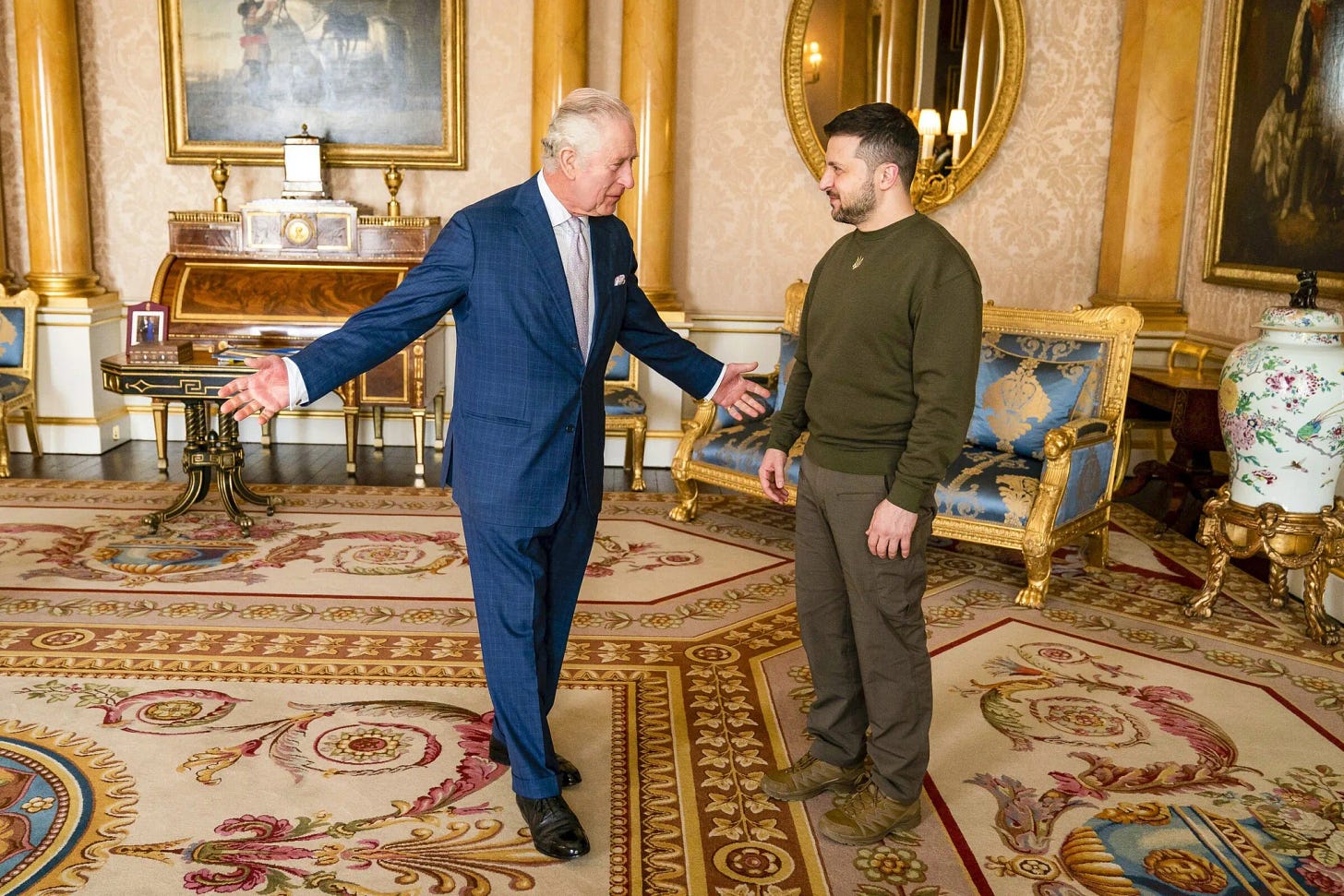Crueler Than Fiction
How Volodymyr Zelenskyy's TV portrayal of an honest, defiant leader became his blueprint for a real one.
This piece is by Mariel Ferragamo, a journalist based in Washington, DC. She covers a range of topics on culture and foreign affairs.
“Do I look like a comedian?” The question, posed by Volodymyr Zelenskyy, is steeped in mischievous irony. He’s speaking to his minister of infrastructure, who’d just asked if Zelenskyy was “serious” about the billion-dollar budget he’s been given to repair Ukraine’s dilapidated roads, hoping to skim some off the top. “Yes,” the minister retorted, before excusing himself to call his next-in-command and report a smaller number, who did the same to his employee, and so on. By the end of it, the construction workers were asked to rebuild roads with no budget, no supplies, and no pay.
Such a moment could have just as easily played out in the Kyiv presidential halls, but this one in particular took place on a television set. The minister of infrastructure is not, in fact, in charge of Ukraine’s bridges and highways, b…




